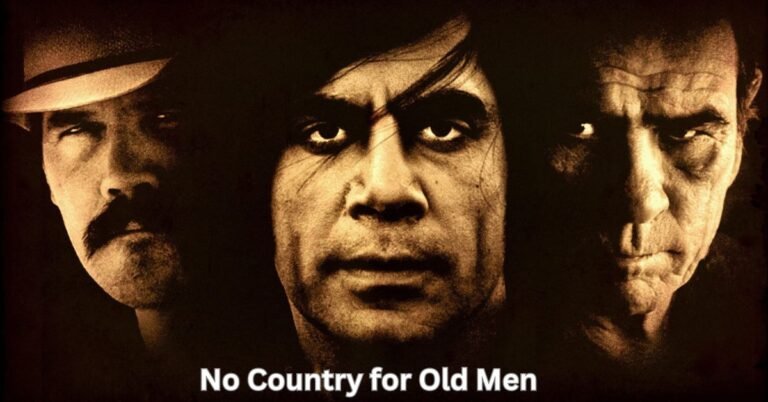No Country for Old Men, a film directed by the Coen brothers and based on Cormac McCarthy’s novel, masterfully explores themes of fate, morality, and the relentless passage of time. Set against the stark backdrop of West Texas, the story follows a gripping narrative of crime, pursuit, and existential despair. This article delves into the nuances of the film, examining its characters, themes, and the symbolism of its desert setting.
Table of Contents
ToggleThe Characters: Symbols of Despair
Llewelyn Moss
Llewelyn Moss, portrayed by Josh Brolin, is a Vietnam War veteran who stumbles upon a drug deal gone wrong and a briefcase full of cash. His decision to take the money sets off a chain of events that spirals into violence and tragedy. Moss embodies the struggle against fate and the human desire for a better life, yet his choices lead him deeper into despair. His character highlights the notion that even the most determined individuals cannot escape the consequences of their actions.
Anton Chigurh
Javier Bardem’s portrayal of Anton Chigurh presents a chilling embodiment of death and inevitability. Chigurh is an unstoppable force, pursuing Moss with a philosophical view of fate and chance. His use of a coin toss to decide the fate of his victims underscores the randomness of life and death. Chigurh’s character raises questions about morality in a world devoid of clear justice, emphasizing the film’s central theme of despair.
Sheriff Ed Tom Bell
Tommy Lee Jones plays Sheriff Ed Tom Bell, a weary lawman who grapples with the changing landscape of crime and morality. Bell’s reflections on his past and his growing sense of hopelessness illuminate the theme of generational despair. He symbolizes the struggle of an older generation to comprehend a world increasingly filled with violence and moral ambiguity. Through Bell, the film poignantly addresses the inevitability of change and the accompanying feelings of helplessness.
Themes of Morality and Fate
The Absence of Justice
One of the film’s most striking features is its bleak portrayal of justice. The law seems ineffectual against the chaos unleashed by Chigurh. As Sheriff Bell struggles to maintain order, he becomes a symbol of the old world grappling with the harsh realities of a new, lawless environment. This absence of justice reinforces the sense of despair that permeates the film, suggesting that moral frameworks may no longer apply in a world ruled by violence.
The Nature of Evil
The film delves deep into the nature of evil, particularly through Chigurh’s character. His philosophical musings about fate and the arbitrary nature of life challenge viewers to confront uncomfortable truths about morality. The randomness of death in the film serves as a stark reminder that evil often goes unpunished, leaving characters like Moss and Bell to navigate a landscape devoid of hope.
The Passage of Time
Time serves as an omnipresent force in “No Country for Old Men.” The relentless progression of time contributes to the characters’ feelings of despair. Bell’s nostalgia for the past contrasts sharply with the violent present, illustrating the tension between what was and what is. This theme culminates in Bell’s resignation to a world he no longer understands, emphasizing the futility of trying to reclaim lost ideals.
The Desert Setting: A Symbol of Despair
The Stark Landscape
The vast, arid landscapes of West Texas are not just a backdrop; they are integral to the film’s thematic depth. The desert symbolizes isolation, desolation, and the harsh realities of life. Its barren beauty contrasts sharply with the violence that unfolds, amplifying the sense of hopelessness. The emptiness of the desert mirrors the characters’ internal struggles, reinforcing the film’s exploration of despair.
Nature as a Relentless Force
In “No Country for Old Men,” nature plays a dual role as both a setting and a character. The desert’s unforgiving terrain reflects the brutality of human nature, suggesting that the harshness of life is an inescapable reality. As characters traverse this landscape, they confront not only external threats but also their internal demons. The relentless sun, barren earth, and open skies amplify the existential dread that permeates their journey.
Cinematic Techniques: Enhancing the Despair
Minimalist Dialogue
The Coen brothers employ a minimalist approach to dialogue, allowing the visuals to convey the emotional weight of the story. The sparse conversations and prolonged silences create an atmosphere of tension and foreboding. This technique compels viewers to engage with the film on a deeper level, heightening the sense of despair as characters grapple with their fates.
The Use of Sound
Sound design in “No Country for Old Men” plays a crucial role in enhancing its themes. The absence of a traditional score during key moments amplifies the tension and emphasizes the stark reality faced by the characters. The sounds of the desert—wind, footsteps, and distant gunfire—immerse viewers in the desolate world, creating an emotional resonance that underscores the film’s exploration of despair.
Conclusion
“Despair in the Desert: A Tale of No Country for Old Men” captures the essence of human struggle against an indifferent universe. Through its complex characters, bleak themes, and evocative setting, the film presents a poignant exploration of morality, fate, and the passage of time. The Coen brothers’ masterful storytelling and cinematic techniques invite viewers to reflect on the nature of despair in a world where hope seems increasingly elusive. As Sheriff Bell laments the changing landscape, audiences are left to ponder their own understanding of justice, morality, and the inevitable march of time in a world that often feels devoid of meaning.
By weaving these elements together, “No Country for Old Men” remains a powerful meditation on the human condition, reminding us of the fragility of life in the face of despair.
ALSO READ: The Role of Electronics in Modern Vehicles

